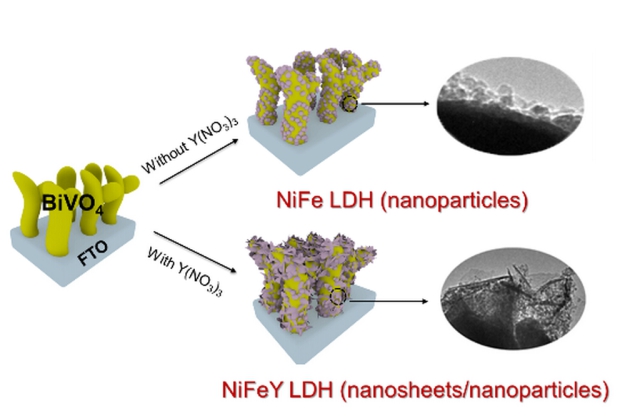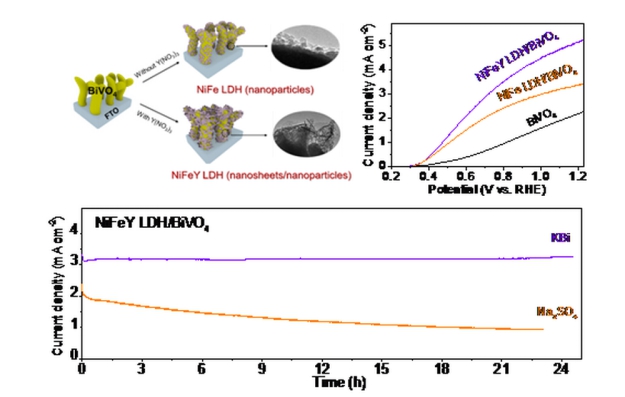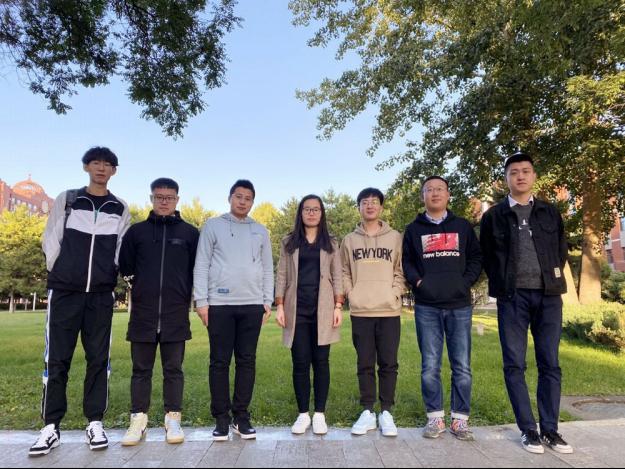Recently, the research team led by Wang Lei, research fellow of the College of Chemistry and Chemical Engineering of IMU, has made progress in the study of the LDH electro-catalyst integrating rare earth elements. The team publishes its research article in ACS Catalysis(Its impact factor is 12.35 and link address is https://pubs.acs.org/doi/10.1021/acscatal.0c03272), which is about Yttrium-induced regulation of electron density in NiFe layered double hydroxides which improves the performance of photoelectron catalysis of semiconductor. And it is named Yttrium-Induced Regulation of Electron Density in NiFe Layered Double Hydroxides Yields Stable Solar Water Splitting. Inner Mongolia University is the institution which the authors and correspondent authors of the article are with. He Dan and Gao Ruiting, the PhD candidates of Grade 2020, are the co-authors of the article and Professor Su Yiguo and Research Fellow Wang Lei are the article’s correspondent authors.

LDH(layered double hydroxide) is the compound assembled by the host layer with positive charge and anions between layers through non-covalent bond. It can be synthesized with simple approaches and is widely used in such fields as photoelectron catalysis. However, in OER(oxygen evolution reaction), the performance of LDH is restricted to some extent with the transfer of its four electrons and its slow reaction kinetics. If it is modified onto semiconductor as co-catalyst, the hole transportation of electrons in photoelectron catalysis will be influenced, which causes the recombination of charges in semiconductor and on its surface. As a result, how to design the highly active co-catalyst derived from LDH to improve the performance of the photoelectron catalysis of semiconductor has become the focus in the research field. The team led by Lei Wang, with one-step hydrothermal process, produces NiFeY. The integration of the element Y changes the structure of the catalyst, improves its conductivity, strengthens the interaction among metallic elements and improves the activity of OER. As co-catalyst, NiFeY further improves the transportation of charge in semiconductor and its surface kinetics. Under the optimized conditions NiFeY/BiVO4 has got an electron density of 5.20 mA cm-2 with 1.23 VRHE and keeps its stability with 0.8VRHE for nearly 25 hours.


The above-mentioned work has been funded by the projects from National Natural Science Foundation(projects number: 51802320, 21965024), Inner Mongolia Foundation for Outstanding Youth(project number: 2020JQ01) and Steed Program for High-Level Talents of IMU(project number: 21300-5195102).

Wang’s research team was established in January, 2019 and focuses on the study of solar water splitting hydrogen production and anti-corrosion.
The team’s website is: https://www.x-mol.com/groups/imu_wanglei

